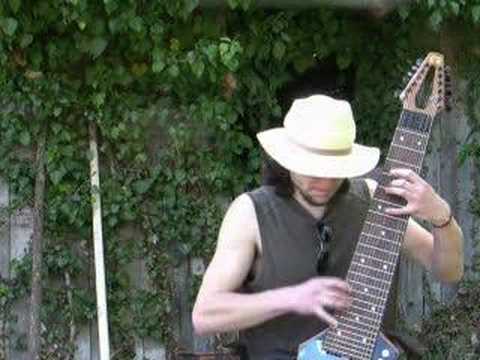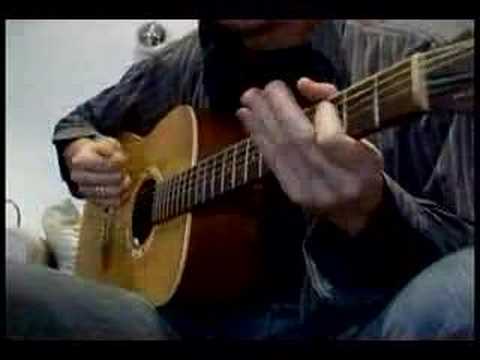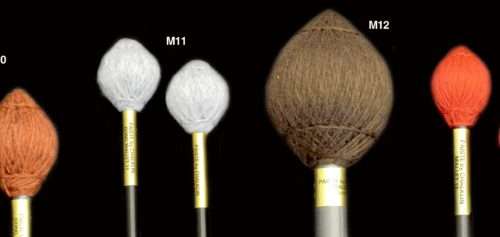
Non-standard guitar playing techniques
Contents
Every virtuoso guitarist has a couple of tricks up their sleeves that make their playing unique and compelling. The guitar is a universal instrument. From it it is possible to extract many melodic sounds that can both decorate the composition and change it beyond recognition. This article will focus on non-standard techniques for playing the guitar.

Slide
This technique originated in African countries, and American bluesmen brought it popularity. Street musicians used glass bottles, metal bars, light bulbs and even cutlery to create a vibrant live sound and attract the attention of passersby. This playing technique is called bottleneck, or slide.
The essence of the technique is quite simple. Instead of pressing the strings with the fingers of the left hand, guitarists use a metal or glass object – slide. The sound of the instrument changes beyond recognition. The slide is great for acoustic and electric guitars, but does not work well with nylon strings.
Modern slides are made in the form of tubes so that they can be placed on your finger. This allows you to combine a new technique with a familiar classical technique and quickly switch between them if necessary. However, you can experiment with any items you come across.
An excellent example of the slide technique can be seen in the video
Tapping
Tapping – one of the forms of legato. The name of the technique comes from the English word tapping – tapping. Musicians produce sound by striking strings on the fingerboard. You can use one hand or both at once for this.
Try plucking the second string at the fifth fret with your left index finger (the note F), and then quickly press it at the seventh fret (the note G) with your ring finger. If you suddenly pull your ring finger off the string, the F will sound again. By alternating such blows (they are called hammer-on) and pulling (pull-off), you can build entire melodies.
Once you’ve mastered one-handed tapping, try using your other hand too. Virtuosos of this technique can perform several melodic lines simultaneously, creating the feeling that 2 guitarists are playing at once.
A striking example of tapping is the composition “Song for Sade” by Ian Lawrence


Watch this video on YouTube
In the video he uses a special type of guitar, but the essence of the technique does not change at all.
Mediator harmonic
If you’re into rock music, you’ve probably heard how guitarists insert high-pitched, “screaming” sounds into their parts. This is an effective way to diversify your playing and add dynamics to the composition.
Take out mediator harmonic It can be done on any guitar, but without amplification the sound will turn out to be very quiet. Therefore, this technique is considered purely “electric guitar”. Hold the pick so that the pad of your thumb protrudes beyond its edges. You need to pluck the string and immediately dampen it slightly with your finger.
It almost never works out the first time. If you turn it down too much, the sound will disappear. If it’s too weak, you’ll get a regular note instead of a harmonic. Experiment with the position of your right hand and with different grips – and one day everything will work out.
Slap
This unconventional guitar playing technique comes from bass instruments. Translated from English, slap is a slap. Guitarists hit the strings with their thumbs, causing them to hit the metal frets, producing a characteristic sound. Musicians often play slap on the bass strings, combining it with sharp plucking of the thin ones.
This style is perfect for rhythmic music like funk or hip-hop. An example of slap play is shown in the video


Watch this video on YouTube
Bar bending
This is probably one of the most unconventional guitar playing techniques known to the world. It is necessary to extract some note or chord on “empty”, unclamped strings. After this, press the guitar’s body towards you with your right hand, and press on the headstock with your left. The tuning of the guitar will change slightly and create a vibrato effect.
The technique is used quite rarely, but has great success when played in public. It’s quite easy to make and looks very impressive. American guitarist Tommy Emmanuel often uses a similar technique. Watch this video at 3:18 and you will understand everything.
![Classical Gas [Mason Williams] | Tommy Emmanuel](https://digital-school.net/wp-content/plugins/wp-youtube-lyte/lyteCache.php?origThumbUrl=https%3A%2F%2Fi.ytimg.com%2Fvi%2FS33tWZqXhnk%2F0.jpg)
![Classical Gas [Mason Williams] | Tommy Emmanuel](https://digital-school.net/wp-content/plugins/wp-youtube-lyte/lyteCache.php?origThumbUrl=https%3A%2F%2Fi.ytimg.com%2Fvi%2FS33tWZqXhnk%2F0.jpg)
Watch this video on YouTube
.



